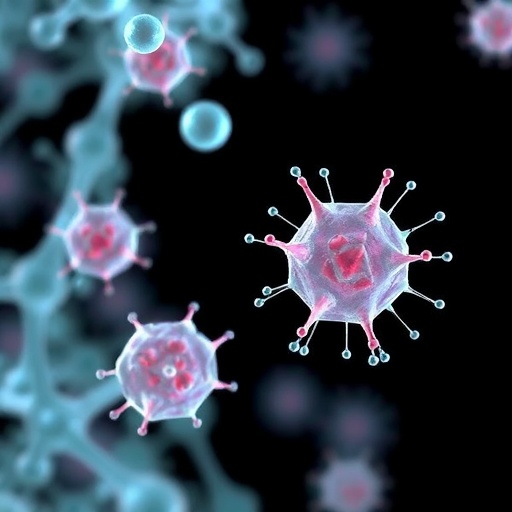In a landmark synthesis of fifteen years of scientific advancement, a team of researchers led by Professors Bing-Jie Ni from the University of New South Wales and Wenshan Guo from the University of Technology Sydney has published a seminal review that charts the transformative journey of transition metal-based electrocatalysts within microbial electrochemical cells (MECs). This comprehensive work, recently featured in Nano-Micro Letters, delves deeply into the evolution of catalyst design from the nanoscale architecting of materials to their deployment in macroscale systems, reflecting the field’s progressive march toward sustainable, efficient hydrogen production technologies.
Microbial electrochemical hydrogen production presents a frontier in renewable energy, offering a promising route to harvest clean hydrogen fuel by leveraging the catalytic prowess of microbes coupled with advanced electrode materials. Transition metals (TMs), in particular, have emerged as pivotal players given their unique electronic properties, abundance, and cost-effectiveness compared to conventional noble metals. The review meticulously documents how TM catalysts—encompassing oxides, dichalcogenides, phosphides, carbides, nitrides, and hybrid compounds—have been engineered and optimized to rival and often surpass traditional systems, heralding a paradigm shift in catalyst development.
At the heart of the review lies a nuanced exploration of the delicate balance between catalytic performance and economic viability. The authors demonstrate that TM-based catalysts do not merely offer superior intrinsic activity and durability but also address critical barriers related to biocompatibility and material abundance. This positioning is crucial for MECs as they scale from experimental setups to pilot and industrial levels, underscoring the catalysts’ role in actual wastewater treatment systems and real-world hydrogen generation.
Key to optimizing MEC performance are advanced design strategies centering on atomic-level active site engineering. Techniques such as heteroatom doping introduce controlled defects or modify electronic structures, thereby reducing the activation energy for the hydrogen evolution reaction (HER). Surface activation methods and bandgap modulation further enhance electron transfer dynamics, enabling faster reaction kinetics and higher current densities. These nanoscale manipulations underscore the sophistication with which researchers now tailor catalysts to meet stringent electrochemical demands.
In parallel, the review highlights the importance of hybrid structures where transition metals are synergistically combined with conductive carbons or alloy frameworks. These composites leverage the best attributes of each component, including enhanced electrical conductivity, mechanical strength, and chemical stability. Such integration addresses long-standing challenges including catalyst deactivation and loss of active surface area during prolonged operations, thus ensuring sustained MEC activity and efficiency.
Beyond materials chemistry, this extensive review bridges the micro-to-macro divide by emphasizing system-level considerations crucial for real-world application. The authors advocate for a concerted approach that aligns catalyst synthesis and characterization with practical system requirements, including reactor design, operational parameters, and scalable manufacturing. This holistic perspective ensures that innovations in catalyst performance translate effectively to pilot-scale and industrial deployments.
Mechanistic insights feature prominently, with in-depth discussion on reaction kinetics and thermodynamics. TM catalysts are shown to effectively lower the Gibbs free energy associated with hydrogen intermediates, a critical parameter that governs the HER pathway efficiency. The authors present how understanding these fundamental reaction steps at the atomic scale informs strategic material modifications, paving the way for catalysts that deliver unrivaled activity under ambient conditions.
Computational advancements form another pillar of this review. The fusion of density functional theory (DFT), microkinetic modeling, and emerging physics-informed machine learning frameworks is portrayed as a transformative toolkit for catalyst discovery and optimization. These computational approaches unravel complex reaction landscapes and predict performance metrics, substantially accelerating the design cycle and reducing experimental trial-and-error.
Pilot-scale demonstrations are underscored as milestones marking the maturation of TM-based MEC technologies. The review details how select MEC systems integrated with optimized TM electrocatalysts have reliably generated hydrogen with yields and economic profiles promising for industrial adoption. These case studies serve as proof points validating the techno-economic analyses woven throughout the review, linking molecular-scale innovations to tangible energy solutions.
Artificial intelligence (AI) and data-driven methodologies emerge as exciting frontiers for guiding scalable synthesis and predictive modeling of catalyst behavior. By leveraging large datasets and advanced algorithms, future research is poised to circumvent synthesis bottlenecks, uncover novel catalyst compositions, and optimize operational protocols swiftly. The potential for AI-enabled rational design thus complements experimental and computational efforts, embodying a multifaceted approach to tackling hydrogen production challenges.
Crucially, the review situates TM-based electrocatalysts within the broader sustainability discourse. Life cycle assessments and environmental impact evaluations are integrated into the evaluation framework, ensuring that proposed technologies meet stringent green energy criteria. This aligns with global imperatives to decarbonize energy portfolios and transition toward a circular economy where materials are not only efficient but also sustainably sourced and recyclable.
The convergence of materials innovation, mechanistic elucidation, and system integration within this review establishes TM-based catalysts as cornerstone technologies for next-generation microbial electrochemical hydrogen production. The authors chart a clear trajectory toward commercial implementation, facilitated by synergistic advances in scientific understanding and engineering. This synthesis not only reflects scientific progress but also inspires future research endeavors aimed at fulfilling the promise of hydrogen as a clean, renewable fuel.
As this comprehensive review reverberates across the scientific community, anticipation builds for further groundbreaking studies from Professors Ni, Guo, and their collaborators. Their work embodies the spirit of multidisciplinary innovation required to harness biological-electrochemical interfaces and transition metal chemistry in forging a sustainable energy future, marking an exciting chapter in the global quest for green hydrogen solutions.
Subject of Research: Transition Metal-Based Electrocatalysts for Microbial Electrochemical Hydrogen Production
Article Title: 15 Years of Progress on Transition Metal-Based Electrocatalysts for Microbial Electrochemical Hydrogen Production: From Nanoscale Design to Macroscale Application
News Publication Date: 18-Jun-2025
Web References: 10.1007/s40820-025-01781-6
Image Credits: Seyed Masoud Parsa, Zhijie Chen, Huu Hao Ngo, Wei Wei, Xinbo Zhang, Ying Liu, Bing-Jie Ni, Wenshan Guo.
Keywords
Hydrogen, Transition Metal Catalysts, Microbial Electrochemical Cells, Electrocatalysis, Hydrogen Evolution Reaction, Sustainable Energy, Catalyst Design, Nano-Micro Letters
Tags: advanced electrode materialscatalyst design evolutionclean hydrogen fuel generationeconomic viability of catalystslarge-scale hydrogen applicationsmicrobial electrolysis cellsnanoscale catalyst engineeringnanoscale to macroscale transitionrenewable energy technologysustainable hydrogen productiontransition metal catalyststransition metal electrocatalysts





